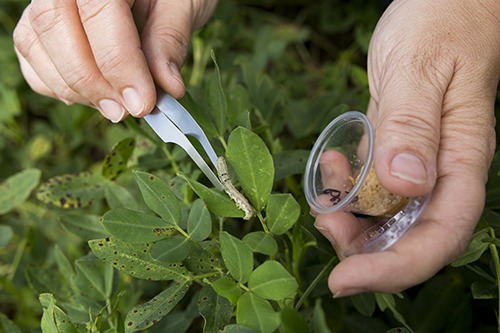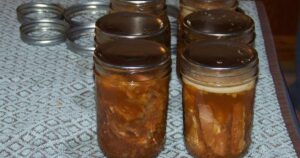
pest scouting.jpg

Pest Scouting
Introduction: Pest scouting is a proactive monitoring practice used in agriculture to assess pest populations, identify pest species, and evaluate pest damage levels in crops. By systematically surveying fields and tracking pest dynamics, farmers can make informed decisions regarding pest management strategies and optimize crop protection efforts.
Purpose of Pest Scouting:
- Early Detection:
- Pest scouting enables early detection of pest infestations, allowing farmers to intervene promptly before pest populations reach damaging levels. Early intervention minimizes crop losses and reduces the need for intensive pest control measures.
- Species Identification:
- Scouting helps farmers identify the specific pest species present in their fields, as well as beneficial insects and natural enemies. Accurate pest identification is essential for selecting appropriate control tactics and avoiding unnecessary pesticide applications.
- Monitoring Pest Dynamics:
- Regular scouting provides valuable data on pest population trends, seasonal fluctuations, and spatial distribution patterns. Understanding pest dynamics helps farmers anticipate pest outbreaks and implement timely management interventions.
Methods of Pest Scouting:
- Visual Inspection:
- Farmers and scouts visually inspect crops for signs of pest damage, including feeding injury, foliar discoloration, and presence of pests or their eggs. Scouting may involve walking through fields, examining plant samples, or using binoculars for detailed observation.
- Trapping and Monitoring Devices:
- Traps, pheromone lures, sticky traps, and other monitoring devices attract and capture pests, providing quantitative data on pest abundance and activity levels. Trap placement and monitoring frequency are adjusted based on crop type, pest species, and environmental conditions.
- Remote Sensing Technologies:
- Remote sensing technologies, such as drones, satellites, and unmanned aerial vehicles (UAVs), offer efficient means of assessing crop health and detecting pest outbreaks over large areas. Remote sensing data supplement ground-based scouting efforts and provide spatially explicit information for decision-making.
Integration with Pest Management:
- Threshold-Based Decision Making:
- Pest scouting data inform threshold-based decision-making, where action thresholds are established based on economic injury levels and crop tolerance to pest damage. When pest populations exceed threshold levels, farmers implement appropriate management actions.
- Integrated Pest Management (IPM):
- Pest scouting is an integral component of Integrated Pest Management (IPM) programs, which combine multiple pest control tactics to minimize reliance on chemical pesticides and promote ecological balance. Scouting data guide the selection and timing of control measures within an IPM framework.
Benefits of Pest Scouting:
- Economic Efficiency:
- Timely pest scouting allows for targeted and judicious use of pest control measures, reducing unnecessary pesticide applications and minimizing input costs for farmers.
- Environmental Protection:
- By promoting precision pest management and reducing pesticide usage, pest scouting contributes to environmental sustainability, minimizing chemical residues in food, water, and soil.
- Crop Health and Yield Preservation:
- Early detection and effective pest management facilitated by scouting help preserve crop health and maximize yields, ensuring optimal productivity and profitability for farmers.
Conclusion: Pest scouting is a vital tool in modern agriculture, providing farmers with valuable information to monitor, manage, and mitigate pest pressures in crops. By adopting systematic scouting protocols and integrating scouting data into pest management decision-making processes, farmers can optimize crop protection efforts, minimize pest-related losses, and sustainably manage agricultural landscapes.
Fall off the barn roof and busted your keister? Life on the farm or ranch can be tough on the bum. Need a break? Laugh it off at FarmerCowboy.com, the #1 farm humor site. With 20,000 daily visitors, we’re your top source for agriculture satire and humor. Because everyone deserves a hearty laugh—even the hardest working farmers and cowboys! Join us and turn those long days into fun tales at FarmerCowboy.com.
Originally posted 2017-05-12 17:57:18.
Originally posted 2024-07-11 09:25:23.
Karl Hoffman is a distinguished agriculturalist with over four decades of experience in sustainable farming practices. He holds a Ph.D. in Agronomy from Cornell University and has made significant contributions as a professor at Iowa State University. Hoffman’s groundbreaking research on integrated pest management and soil health has revolutionized modern agriculture. As a respected farm journalist, his column “Field Notes with Karl Hoffman” and his blog “The Modern Farmer” provide insightful, practical advice to a global audience. Hoffman’s work with the USDA and the United Nations FAO has enhanced food security worldwide. His awards include the USDA’s Distinguished Service Award and the World Food Prize, reflecting his profound impact on agriculture and sustainability.






